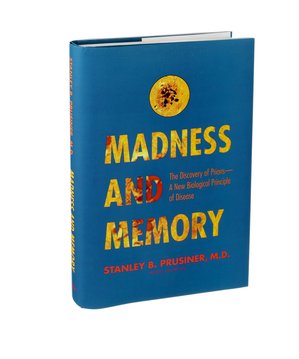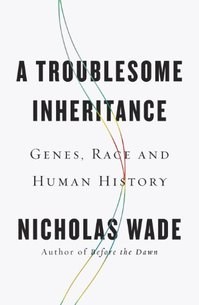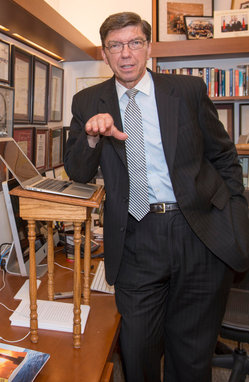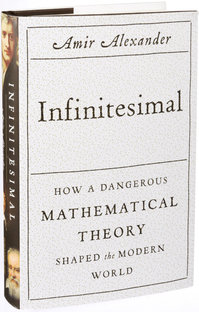During my sabbatical for the 2014-2015 school year, and including this summer and next summer, I plan to throw myself into completion of my book Openness to Creative Destruction. To make more time for that overarching project, I intend to streamline my blogging. I still plan to have an entry posted every day, but will no longer routinely post photos and images, saving the time spent finding, formatting and filing photos and images.
The main goal of my blog is to make evidence and examples widely available, that are related to my core interests of innovation and entrepreneurship. Fewer photos and images may make the blog less visually appealing, but should not interfere with this main goal.
I also plan to increase the percentage of entries that are directly or indirectly relevant to my current and future book projects,
I hope my blog will continue to be of use to the “remnant” of those who share my core interests.
Month: July 2014
“Long, Lonely Odyssey “from Heresy to Orthodoxy””
Source of book image: online version of the NYT review quoted and cited below.
(p. D5) As the Nobel committee put it in the 1997 citation for Dr. Prusiner’s prize in physiology or medicine, he had established “a novel principle of infection” — one so controversial that a few experts in the field still continue to search for that elusive virus. But as far as Dr. Prusiner is concerned, the Nobel confirmed that his long, lonely odyssey “from heresy to orthodoxy” was over.
The journey he details was full of hurdles. Some were of the kind likely to befall any researcher: insufficient laboratory space, poor correlation between needs and resources. (At one point, Dr. Prusiner calculated that for a single year’s worth of experiments he would have to house and feed 72,000 mice, an impossible multimillion-dollar proposition.) He submitted a grant application that was not just rejected for funding but actually “disapproved,” often the kiss of death for a train of scientific thought.
Some of his problems were a little darker but still universal — graduate students captured by competing labs, data appropriated and misrepresented by erstwhile colleagues, bitter authorship battles.
Some of Dr. Prusiner’s shoals, however, seem more particular to his personal operating style. As a teenager he was blessed with what he describes as indefatigable self-confidence, and this trait apparently endures, to the considerable irritation of others.
For the full review, see:
ABIGAIL ZUGER, M.D. “Books; A Victory Lap for a Heretical Neurologist.” The New York Times (Sat., May 20, 2014): D5.
(Note: the online version of the review has the date May 19, 2014.)
The book under review is:
Prusiner, Stanley B. Madness and Memory: The Discovery of Prions–a New Biological Principle of Disease. New Haven, CT: Yale University Press, 2014.
Required Recycling Can Waste Resources
(p. 215) Cato Unbound offers four essays on “The Political Economy of Recycling.” In the lead essay, Michael Munger asks: “Recycling: Can It Be Wrong, When It (p. 216) Feels So Right?” “There are two general kinds of arguments in favor of recycling. The first is that ‘this stuff is too valuable to throw away!’ In almost all cases, this argument is false, and when it is correct recycling will be voluntary; very little state action is necessary. The second is that recycling is cheaper than landfilling the waste. This argument may well be correct, but it is difficult to judge because officials need keep landfill prices artificially low to discourage illegal dumping and burning. Empirically, recycling is almost always substantially more expensive than disposing in the landfill. Since we can’t use the price system, authorities resort to moralistic claims, trying to persuade people that recycling is just something that good citizens do. But if recycling is a moral imperative, and the goal is zero waste, not optimal waste, the result can be a net waste of the very resources that recycling was implemented to conserve.” There are sharp and lively comments from Edward Humes, Melissa Walsh Innes, and Stephen Landsberg. June 2013, at http://www.cato-unbound.org/issues/june-2013/political-economy-recycling.
Source:
Taylor, Timothy. “Recommendations for Further Reading.” Journal of Economic Perspectives 27, no. 4 (Fall 2013): 211-18.
(Note: italics in original.)
Open Source Guru Admits to “Mismatched Incentives” and “Serious Trouble Down the Road”
 “Eric S. Raymond said that the code-checking system had failed in the case of Heartbleed.” Source of caption and photo: online version of the NYT article quoted and cited below.
“Eric S. Raymond said that the code-checking system had failed in the case of Heartbleed.” Source of caption and photo: online version of the NYT article quoted and cited below.
(p. B1) SAN FRANCISCO — The Heartbleed bug that made news last week drew attention to one of the least understood elements of the Internet: Much of the invisible backbone of websites from Google to Amazon to the Federal Bureau of Investigation was built by volunteer programmers in what is known as the open-source community.
Heartbleed originated in this community, in which these volunteers, connected over the Internet, work together to build free software, to maintain and improve it and to look for bugs. Ideally, they check one another’s work in a peer review system similar to that found in science, or at least on the nonprofit Wikipedia, where motivated volunteers regularly add new information and fix others’ mistakes.
This process, advocates say, ensures trustworthy computer code.
But since the Heartbleed flaw got through, causing fears — as yet unproved — of widespread damage, members of that world are questioning whether the system is working the way it should.
“This bug was introduced two years ago, and yet nobody took the time to notice it,” said Steven M. Bellovin, a computer science professor at Columbia University. “Everybody’s job is not anybody’s job.”
. . .
(p. B2) Unlike proprietary software, which is built and maintained by only a few employees, open-source code like OpenSSL can be vetted by programmers the world over, advocates say.
“Given enough eyeballs, all bugs are shallow” is how Eric S. Raymond, one of the elders of the open-source movement, put it in his 1997 book, “The Cathedral & the Bazaar,” a kind of manifesto for open-source philosophy.
In the case of Heartbleed, though, “there weren’t any eyeballs,” Mr. Raymond said in an interview this week.
. . .
The problem, Mr. Raymond and other open-source advocates say, boils down to mismatched incentives. Mr. Raymond said firms don’t maintain OpenSSL code because they don’t profit directly from it, even though it is integrated into their products, and governments don’t feel political pain when the code has problems.
With OpenSSL, by contrast, “for those that do work on this, there’s no financial support, no salaries, no health insurance,” Mr. Raymond said. “They either have to live like monks or work nights and weekends. That is a recipe for serious trouble down the road.”
For the full story, see:
Perlroth, Nicole. “A Contradiction at the Heart of the Web.” The New York Times (Sat., April 19, 2014): B1 & B2.
(Note: ellipses added.)
(Note: the online version of the story was updated APRIL 18, 2014, and has the title “Heartbleed Highlights a Contradiction in the Web.”)
Raymond’s open source manifesto is:
Raymond, Eric S. The Cathedral & the Bazaar: Musings on Linux and Open Source by an Accidental Revolutionary. Sebastopol, CA: O’Reilly Media, Inc., 1999.
“The World’s Greatest Inventor, World’s Greatest Damn Fool”
(p. 290) One of his employees recalled walking past him one day as the inventor stepped briskly between buildings at the lab. He cheerfully greeted his employer: “Morning, Mr. Edison.” Edison gave him a glance, raised his finger to show a major pronouncement would follow, and said, “The world’s greatest inventor, world’s greatest damn fool,” then hurried on.
Source:
Stross, Randall E. The Wizard of Menlo Park: How Thomas Alva Edison Invented the Modern World. New York: Crown Publishers, 2007.
Reigning Intellectual Orthodoxy on Race Is Wrong
Source of book image: http://ecx.images-amazon.com/images/I/41BYpEQumNL._.jpg
(p. C5) The reigning intellectual orthodoxy is that race is a “social construct,” a cultural artifact without biological merit.
The orthodoxy’s equivalent of the Nicene Creed has two scientific tenets. The first, promulgated by geneticist Richard Lewontin in “The Apportionment of Human Diversity” (1972), is that the races are so close to genetically identical that “racial classification is now seen to be of virtually no genetic or taxonomic significance.” The second, popularized by the late paleontologist Stephen Jay Gould, is that human evolution in everything but cosmetic differences stopped before humans left Africa, meaning that “human equality is a contingent fact of history,” as he put it in an essay of that title in 1984.
Since the sequencing of the human genome in 2003, what is known by geneticists has increasingly diverged from this orthodoxy, even as social scientists and the mainstream press have steadfastly ignored the new research. Nicholas Wade, for more than 20 years a highly regarded science writer at the New York Times, has written a book that pulls back the curtain.
It is hard to convey how rich this book is. It could be the textbook for a semester’s college course on human evolution, systematically surveying as it does the basics of genetics, evolutionary psychology, Homo sapiens’s diaspora and the recent discoveries about the evolutionary adaptations that have occurred since then. The book is a delight to read–conversational and lucid. And it will trigger an intellectual explosion the likes of which we haven’t seen for a few decades.
The title gives fair warning: “A Troublesome Inheritance: Genes, Race and Human History.” At the heart of the book, stated quietly but with command of the technical literature, is a bombshell. It is now known with a high level of scientific confidence that both tenets of the orthodoxy are wrong.
For the full review, see:
CHARLES MURRAY. “The Diversity of Life; A scientific revolution is under way–upending one of our reigning orthodoxies.” The Wall Street Journal (Sat., May 3, 2014): C5 & C7.
(Note: ellipses added.)
(Note: the online version of the review has the date May 2, 2014, and has the title “Book Review: ‘A Troublesome Inheritance’ by Nicholas Wade; A scientific revolution is under way–upending one of our reigning orthodoxies.”)
The book under review is:
Wade, Nicholas. A Troublesome Inheritance: Genes, Race and Human History. New York: The Penguin Press, 2014.
Forecasts of Mass Unemployment from Robots Were Wrong
(p. 215) Frank Levy and Richard J. Murnane consider the interaction between workers and machinery in “Dancing with Robots: Human Skills for Computerized Work.” “On March 22, 1964, President Lyndon Johnson received a short, alarming memorandum from the Ad Hoc Committee on the Triple Revolution. The memo warned the president of threats to the nation beginning with the likelihood that computers would soon create mass unemployment: ‘A new era of production has begun. Its principles of organization are as different from those of the industrial era as those of the industrial era were different from the agricultural. The cybernation revolution has been brought about by the combination of the computer and the automated self-regulating machine. This results in a system of almost unlimited productive capacity which requires progressively less human labor. Cybernation is already reorganizing the economic and social system to meet its own needs.’ The memo was signed by luminaries including Nobel Prize winning chemist Linus Pauling, Scientific American publisher Gerard Piel, and economist Gunnar Myrdal (a future Nobel Prize winner). Nonetheless, its warning was only half right. There was no mass unemployment–since 1964 the economy has added 74 million jobs. But computers have changed the jobs that are available, the skills those jobs require, and the wages the jobs pay. For the foreseeable future, the challenge of “cybernation” is not mass unemployment but the need to educate many more young people for the jobs computers cannot do.” Third Way, 2013, http://content.thirdway.org /publications/714/Dancing-With-Robots.pdf.
Source:
Taylor, Timothy. “Recommendations for Further Reading.” Journal of Economic Perspectives 27, no. 4 (Fall 2013): 211-18.
(Note: italics in original.)
Harvard Rejects Christensen’s Advice to Try Disruptive MOOCs
 “Harvard Business School faced a choice between different models of online instruction. Prof. Michael Porter favored the development of online courses that would reflect the school’s existing strategy.” Source of caption and photo: online version of the NYT article quoted and cited below.
“Harvard Business School faced a choice between different models of online instruction. Prof. Michael Porter favored the development of online courses that would reflect the school’s existing strategy.” Source of caption and photo: online version of the NYT article quoted and cited below.
(p. 1) Universities across the country are wrestling with the same question — call it the educator’s quandary — of whether to plunge into the rapidly growing realm of online teaching, at the risk of devaluing the on-campus education for which students pay tens of thousands of dollars, or to stand pat at the risk of being left behind.
At Harvard Business School, the pros and cons of the argument were personified by two of its most famous faculty members. For Michael Porter, widely considered the father of modern business strategy, the answer is yes — create online courses, but not in a way that undermines the school’s existing strategy. “A company must stay the course,” Professor Porter has written, “even in times of upheaval, while constantly improving and extending its distinctive positioning.”
For Clayton Christensen, whose 1997 book, “The Innovator’s Dilemma,” propelled him to academic stardom, the only way that market leaders like Harvard (p. 4) Business School survive “disruptive innovation” is by disrupting their existing businesses themselves. This is arguably what rival business schools like Stanford and the Wharton School have been doing by having professors stand in front of cameras and teach MOOCs, or massive open online courses, free of charge to anyone, anywhere in the world. For a modest investment by the school — about $20,000 to $30,000 a course — a professor can reach a million students, says Karl Ulrich, vice dean for innovation at Wharton, part of the University of Pennsylvania.
“Do it cheap and simple,” Professor Christensen says. “Get it out there.”
But Harvard Business School’s online education program is not cheap, simple, or open. It could be said that the school opted for the Porter theory.
. . .
“Harvard is going to make a lot of money,” Mr. Ulrich predicted. “They will sell a lot of seats at those courses. But those seats are very carefully designed to be off to the side. It’s designed to be not at all threatening to what they’re doing at the core of the business school.”
Exactly, warned Professor Christensen, who said he was not consulted about the project. “What they’re doing is, in my language, a sustaining innovation,” akin to Kodak introducing better film, circa 2005. “It’s not truly disruptive.”
. . .
One morning, [Harvard Business School Dean Nitin Nohria] sat down for one of his regular breakfasts with students. “Three of them had just been in Clay’s course,” which had included a case study on the future of Harvard Business School, Mr. Nohria said. “So I asked them, ‘What was the debate like, and how would you think about this?’ They, too, split very deeply.”
Some took Professor Christensen’s view that the school was a potential Blockbuster Video: a high-cost incumbent — students put the total cost of the two-year M.B.A. at around $100,0000 — that would be upended by cheaper technology if it didn’t act quickly to make its own model obsolete. At least one suggested putting the entire first-year curriculum online.
Others weren’t so sure. ” ‘This disruption is going to happen,’ ” is how Mr. Nohria described their thinking, ” ‘but it’s going to happen to a very different segment of business education, not to us.’ ” The power of Harvard’s brand, networking opportunities and classroom experience would protect it from the fate of second- and third-tier schools, a view that even Professor Christensen endorses — up to a point.
“We’re at the very high end of the market, and disruption always hits the high end last,” said Professor Christensen, who recently predicted that half of the United States’ universities could face bankruptcy within 15 years.
For the full story, see:
JERRY USEEM. “B-School, Disrupted.” The New York Times, SundayBusiness Section (Sun., June 1, 2014): 1 & 4.
(Note: ellipses, and bracketed name, added.)
(Note: the online version of the story has the date MAY 31, 2014, and has the title “Business School, Disrupted.”)
Some of Christensen’s thoughts on higher education can be found in:
Christensen, Clayton M., and Henry J. Eyring. The Innovative University: Changing the DNA of Higher Education from the inside Out. San Francisco, CA: Jossey-Bass, 2011.
“On the topic of online instruction, Prof. Clayton Christensen said: ‘Do it cheap and simple. Get it out there.”” Source of caption and photo: online version of the NYT article quoted and cited above.
They Begged for a Chance to Help Edison Create the Future
(p. 289) He, and anyone working for him, were perceived as standing at the very outer edge of the present, where it abuts the future. When a young John Lawson sought a position at Edison’s lab and wrote in 1879 that he was “willing to do anything, dirty work–become anything, almost a slave, only give me a chance,” he spoke with a fervency familiar to applicants knocking today on the door of the hot tech company du jour. In the age of the computer, different companies at different times–for example, Apple in the early 1980s, Microsoft in the early 1990s, Google in the first decade of the twenty-first century–inherited the temporary aura that once hovered over Edison’s Menlo Park laboratory, attracting young talents who applied in impossibly large numbers, all seeking a role in the creation of the zeitgeist (and, like John Ott, at the same time open to a chance to become wealthy). The lucky ones got inside (Lawson got a position and worked on electric light).
Source:
Stross, Randall E. The Wizard of Menlo Park: How Thomas Alva Edison Invented the Modern World. New York: Crown Publishers, 2007.
Catholic Church Banned Infinitesimals from European Classrooms Taught by Jesuits
Source of book image: http://static01.nyt.com/images/2014/04/08/science/08SCIB/08SCIB-superJumbo.jpg
(p. C9) Mr. Alexander’s narrative opens in the early 17th century, when Catholic Church administrators in Rome, following a campaign by Euclidean stalwart Christopher Clavius, banned the infinitesimal from the classrooms of Jesuit schools throughout Europe. Instructors’ teachings and writings were monitored to enforce strict adherence to the classical Euclidean geometrical tradition. Mr. Alexander portrays the church’s reactionary stance not as a huff over mathematical philosophy but as a desperate counterattack against existential threats: Euclid’s rules-based structure offered the church a model with which it hoped to rein in a restive flock, roiled by economic and political currents and by an ascendant Protestantism. Martial metaphors abound in the author’s telling: “war against disorder,” “enemies of the infinitely small,” “forces of hierarchy and order.” This was no friendly debate.
For the full review, see:
ALAN HIRSHFELD. “The Limit of Reason; In the 1700s, the idea of an infinitely tiny quantity was so unsettling that the Church banned it from classrooms.” The Wall Street Journal (Sat., May 3, 2014): C9.
(Note: ellipses added.)
(Note: the online version of the review has the date May 2, 2014, and has the title “Book Review: ‘Infinitesimal’ by Amir Alexander; The idea of an infinitely tiny quantity–the foundation of calculus–was so unsettling that in the 17th century the Church banned it from classrooms.”)
The book under review is:
Alexander, Amir. Infinitesimal: How a Dangerous Mathematical Theory Shaped the Modern World. New York: Scientific American/Farrar, Straus and Giroux, 2014.
Raghuram Rajan: “Never in the Field of Economic Policy Has So Much Been Spent, with So Little Evidence, by So Few”
(p. 213) Raghuram Rajan delivered the Andrew Crockett Memorial Lecture at the Bank of International Settlements, titled “A Step in the Dark: Unconventional Monetary Policy after the Crisis.” “Two competing narratives of the sources of the crisis, and attendant remedies, are emerging. The first, and the better known diagnosis, is that demand has collapsed because of the high debt build up prior to the crisis. . . . But there is another narrative. And that is that the fundamental growth capacity in industrial countries has been shifting down for decades now, masked for a while by debt-fueled demand. More such demand, or asking for reckless spending from emerging markets, will not put us back on a sustainable path to growth. Instead, industrial democracies need to improve the environment for growth. The first narrative is the standard Keynesian one, modified for a debt crisis. It is the one (p. 214) most government officials and central bankers, as well as Wall Street economists, subscribe to, and needs little elaboration. The second narrative, in my view, offers a deeper and more persuasive view of the blight that afflicts our times.” Rajan argues that central banks took the right actions during the financial crisis, but that the wisdom of the ultra-low interest rate policies in the aftermath of the crisis are not yet clear. “Churchill could well have said on the subject of unconventional monetary policy, ‘Never in the field of economic policy has so much been spent, with so little evidence, by so few’. Unconventional monetary policy has truly been a step in the dark.” June 23, 2013, at http://www.bis.org/events/agm2013/sp130623.htm.
Source:
Taylor, Timothy. “Recommendations for Further Reading.” Journal of Economic Perspectives 27, no. 4 (Fall 2013): 211-18.
(Note: ellipsis in original.)





